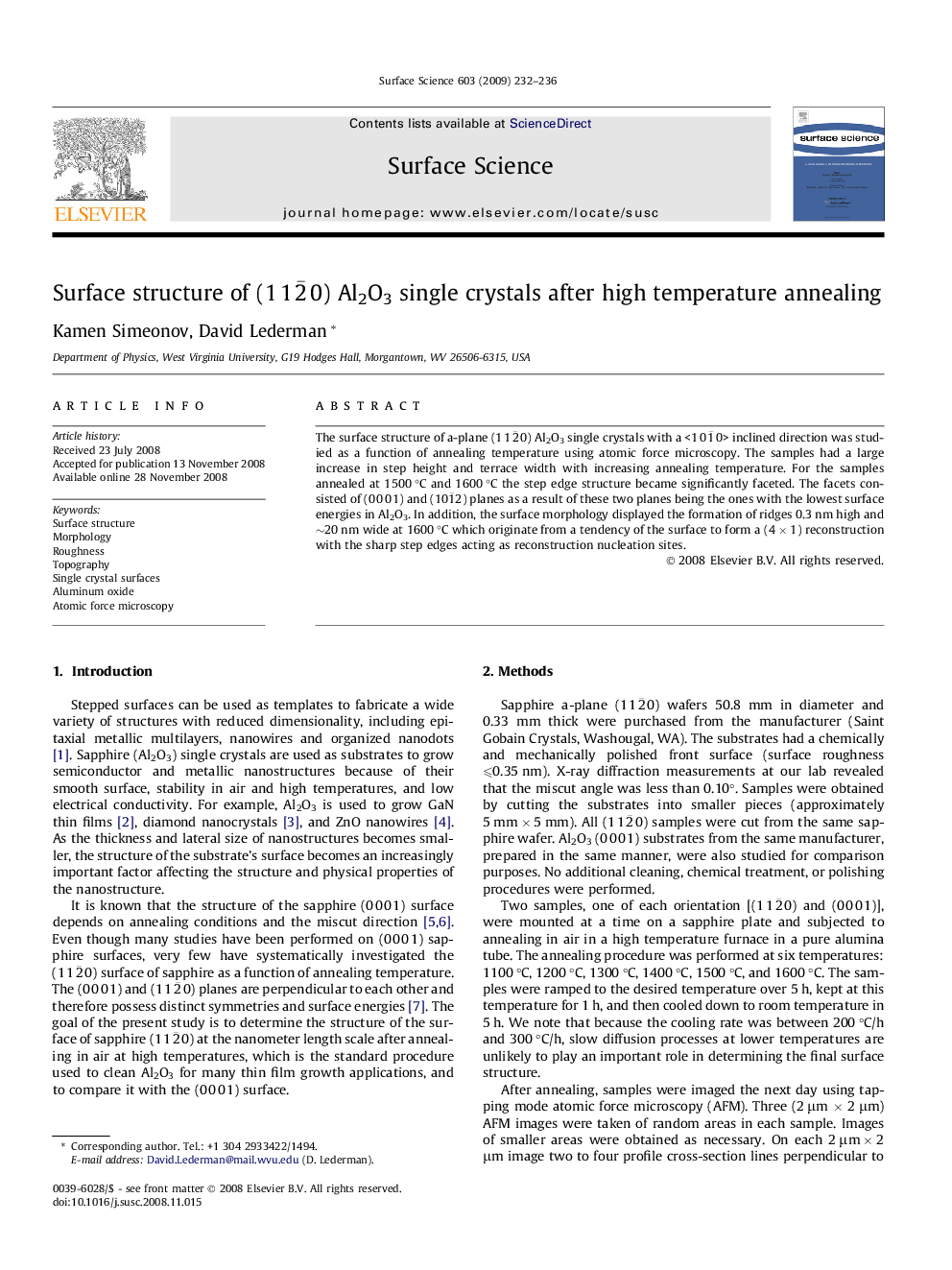| Article ID | Journal | Published Year | Pages | File Type |
|---|---|---|---|---|
| 5424783 | Surface Science | 2009 | 5 Pages |
Abstract
The surface structure of a-plane (112¯0) Al2O3 single crystals with a <101¯0> inclined direction was studied as a function of annealing temperature using atomic force microscopy. The samples had a large increase in step height and terrace width with increasing annealing temperature. For the samples annealed at 1500 °C and 1600 °C the step edge structure became significantly faceted. The facets consisted of (0 0 0 1) and (101¯2) planes as a result of these two planes being the ones with the lowest surface energies in Al2O3. In addition, the surface morphology displayed the formation of ridges 0.3 nm high and â¼20 nm wide at 1600 °C which originate from a tendency of the surface to form a (4 Ã 1) reconstruction with the sharp step edges acting as reconstruction nucleation sites.
Keywords
Related Topics
Physical Sciences and Engineering
Chemistry
Physical and Theoretical Chemistry
Authors
Kamen Simeonov, David Lederman,
